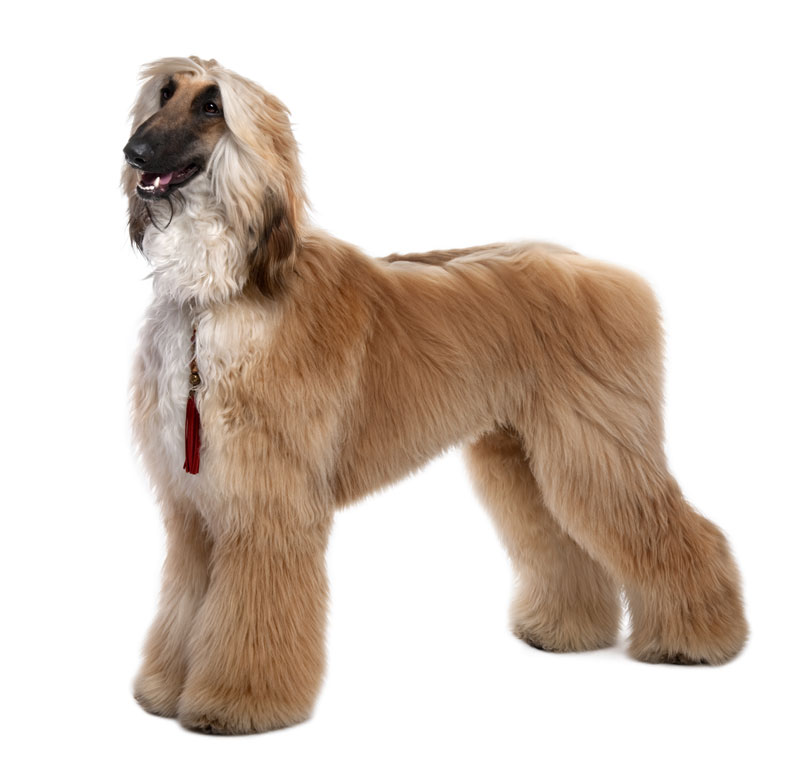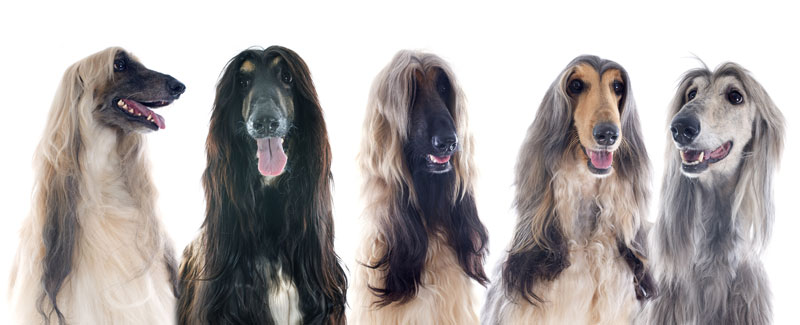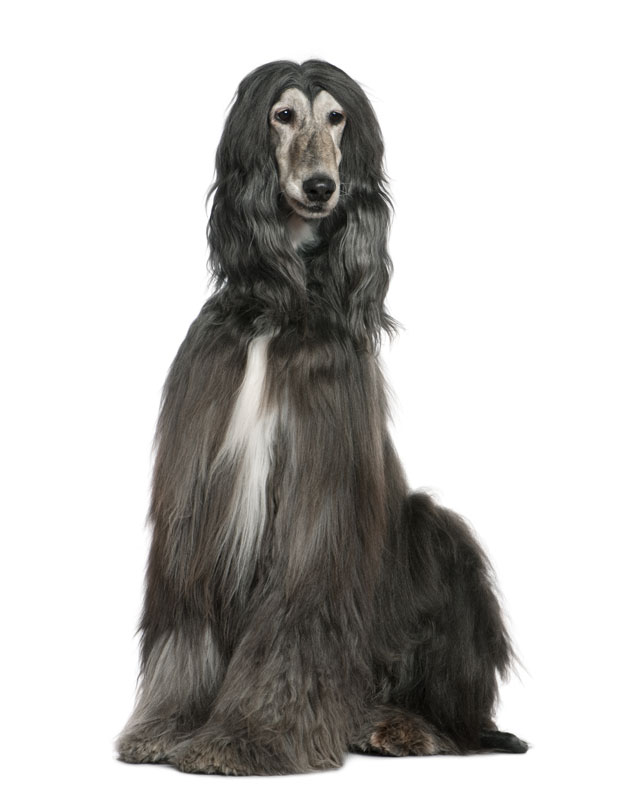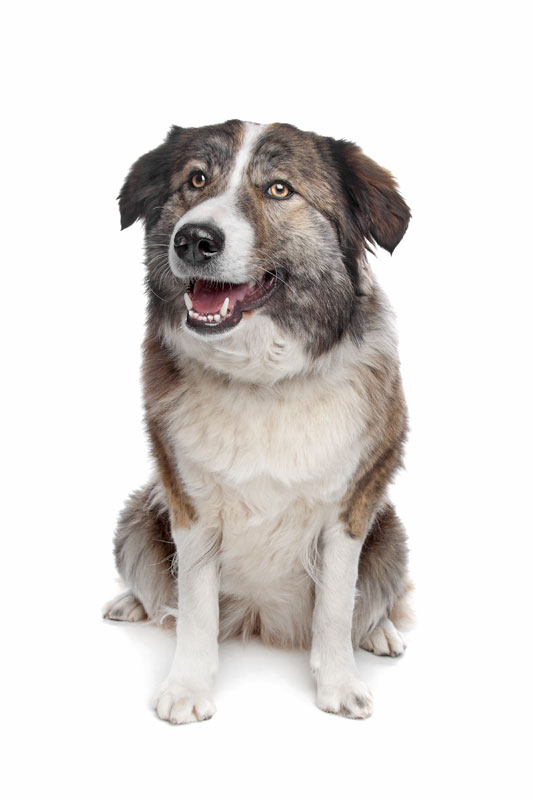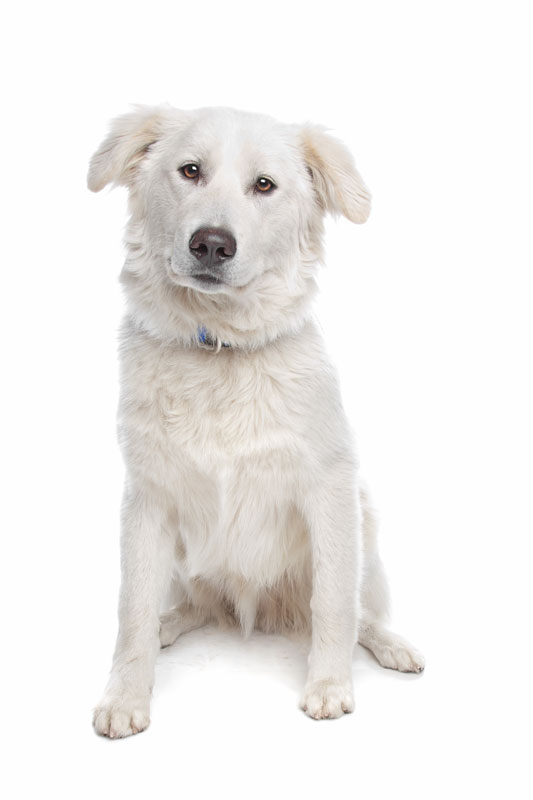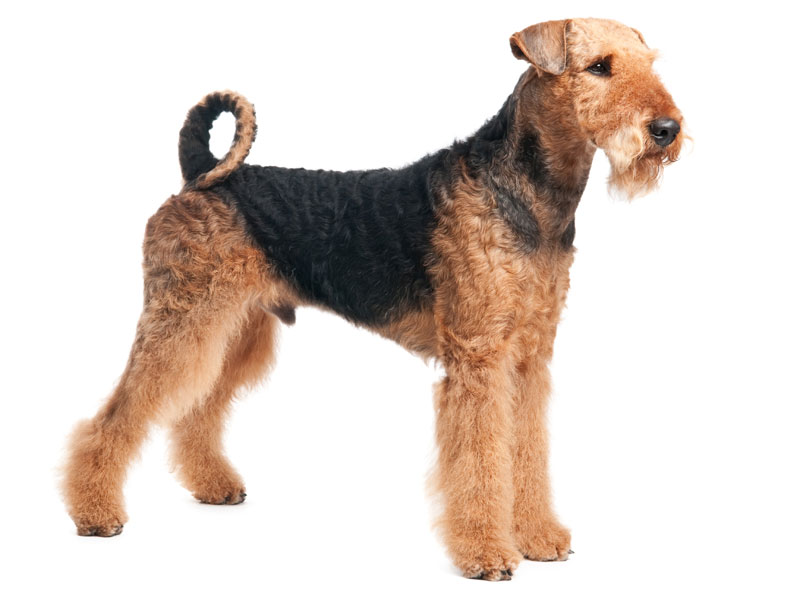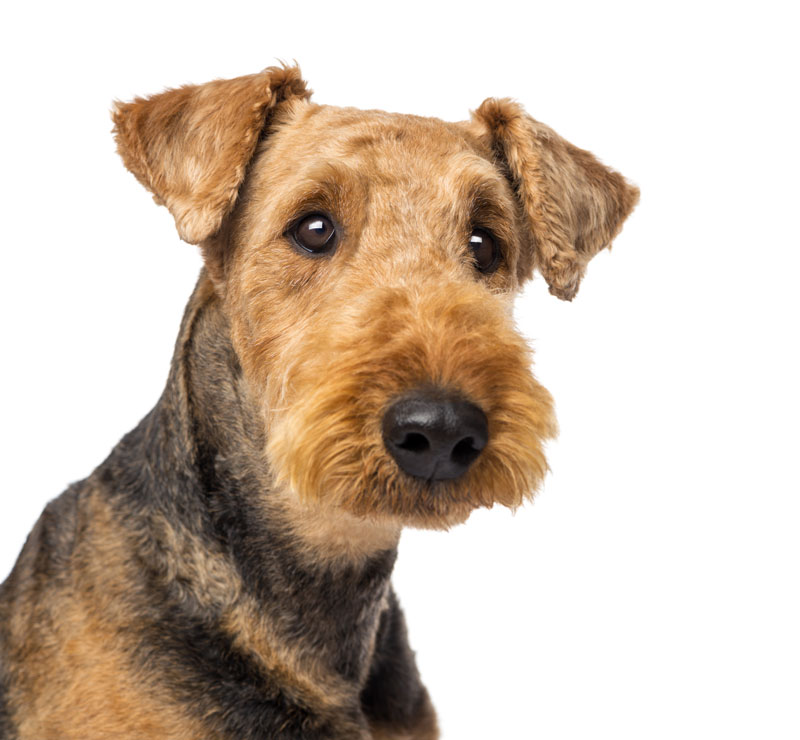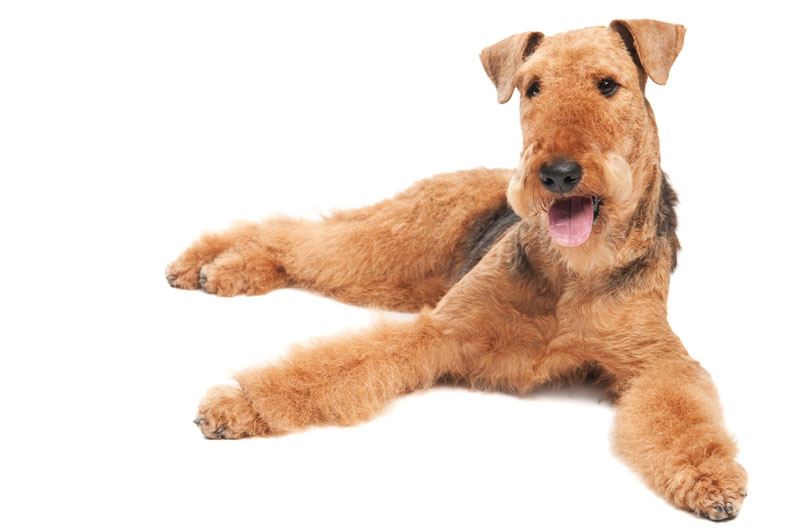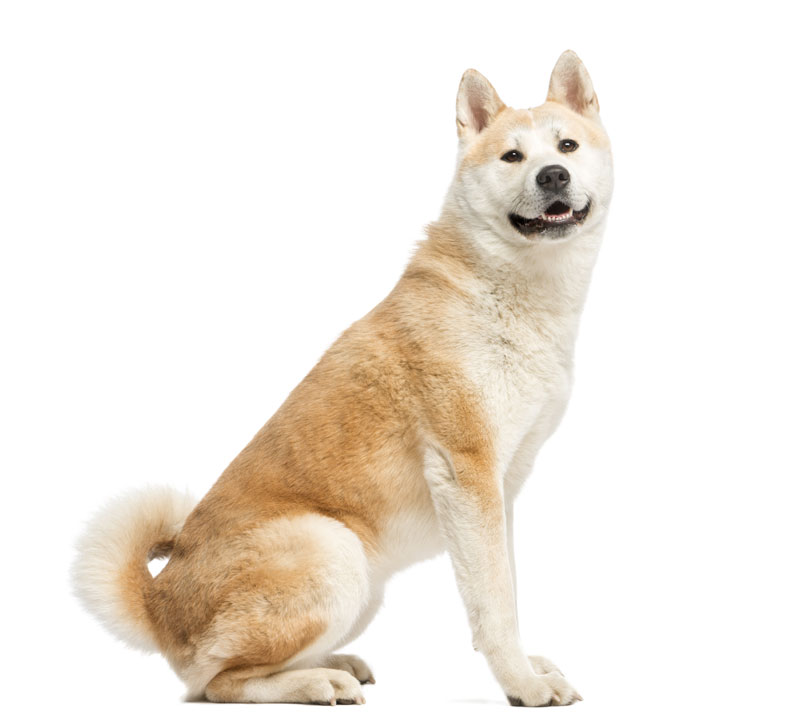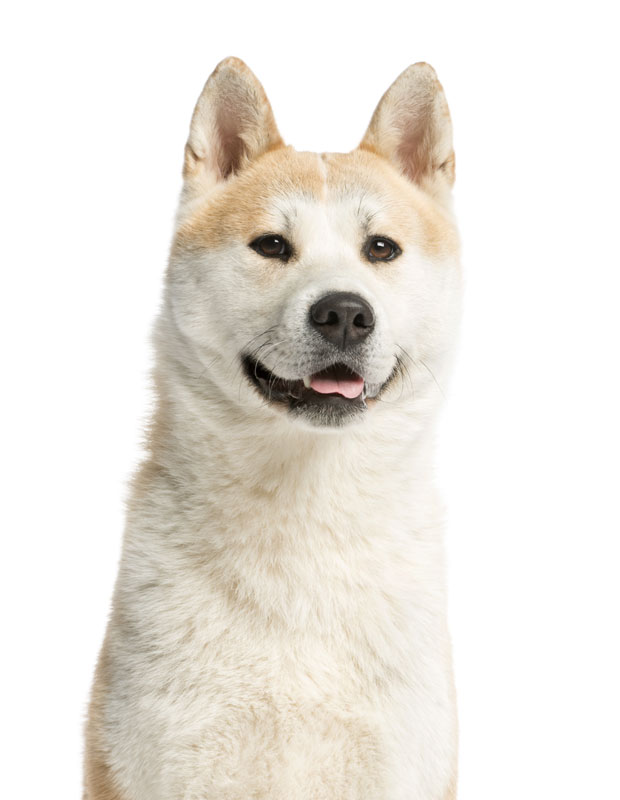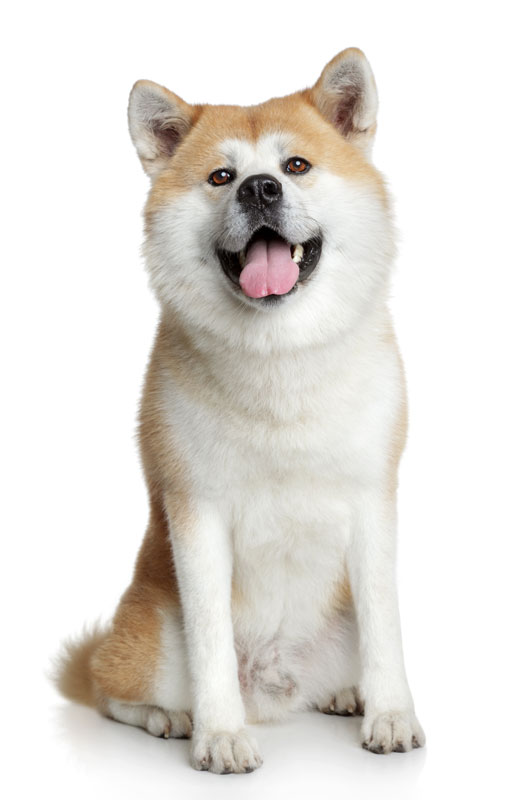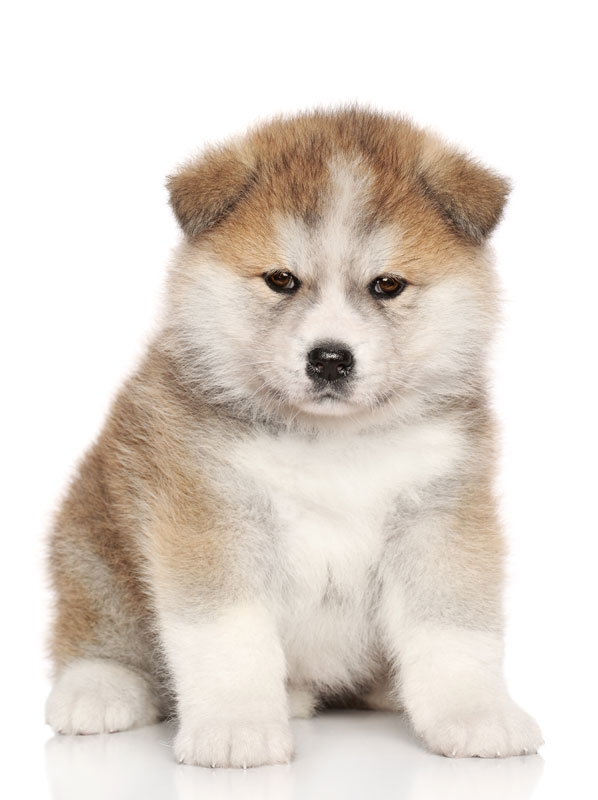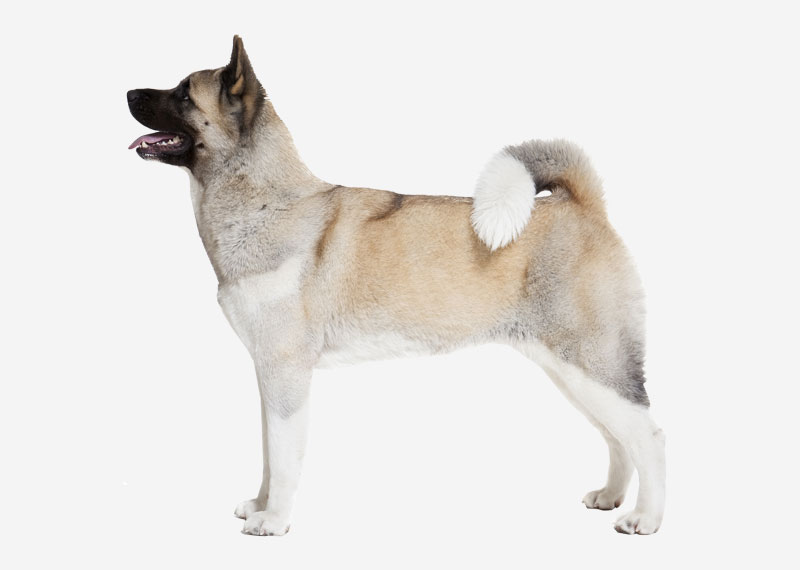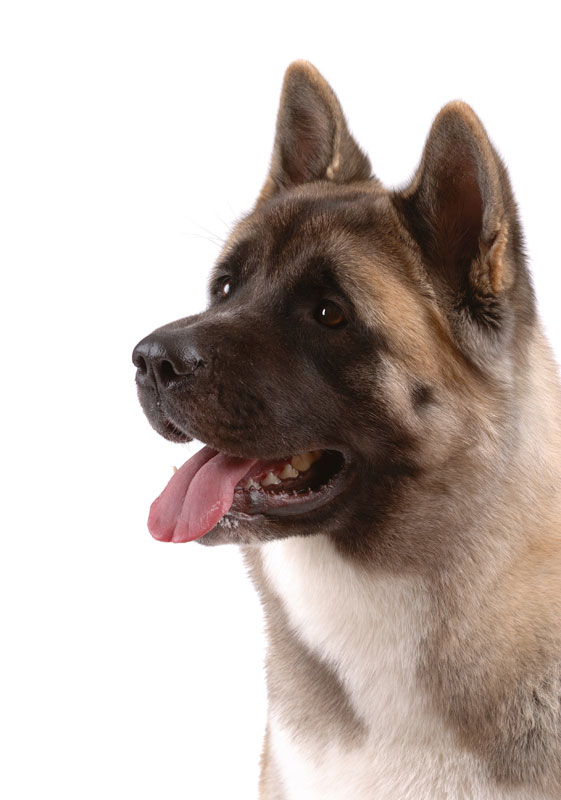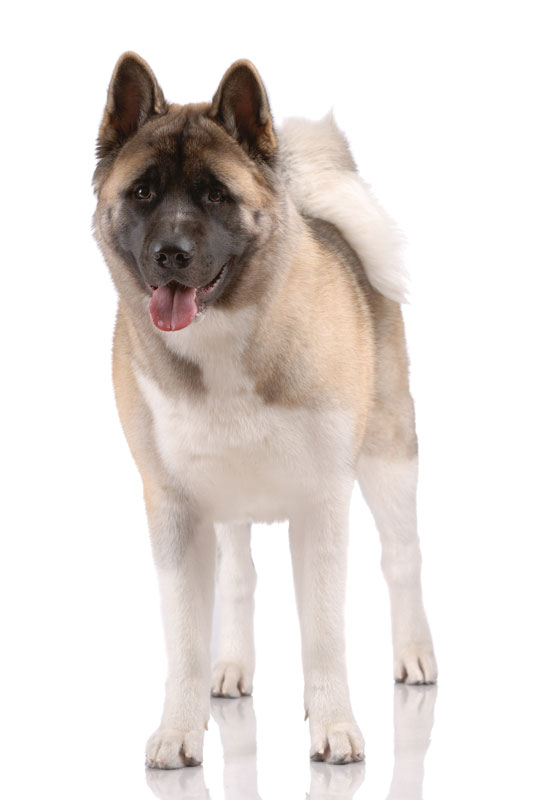Super User
10 Things Vets Want You to Know
With the myriad of information available online and at your veterinarian’s office – here is a quick list of what veterinarians think is most important for maintaining your pet’s good health.
About
Europetnet is a group of national and local associations based across Europe who register owner information about pets that have been uniquely identified with a transponder. Our job is to reunite lost pets with their owners and our services are available from anywhere at any time.
Animal welfare is our fundamental value
Every year Europetnet helps to return thousands of lost animals to owners throughout Europe. People travel with pets, and pets walk across borders. To be able to establish which country a found pet comes from, the Europetnet ID search is a unique and powerful tool. It will search through our database of ID numbers and also through online connected members databases.
If search fails, our team can be contacted to carry out in-depth research to assist in the tracking process. We want to ensure that we always get the best results for pets and their owners.
Become a member
If you have an organisation with a database of ID-chipped pets, you can become a member of Europetnet (EPN). Please read our Statutes and our Set of rules before applying as a member. If our conditions are compatible with your database and organisation, we will be happy to welcome you on the EPN member base.
Abyssinian
The Abyssinian /æbɨˈsɪniən/ is a breed of domestic shorthaired cat with a distinctive "ticked" tabby coat, in which individual hairs are banded with different colors.
It is named after the country (now known as Ethiopia), from where it was first thought to have originated; more recent research now places its origins somewhere near the Egyptian coast. The Abyssinian has since become one of the most popular breeds of shorthair cat in the USA.
History
The Abyssinian cat as it is known today was developed in Great Britain. The name 'Abyssinian' refers to Ethiopia, in reference to widely-spread stories of British soldiers deployed to North Africa in the nineteenth century returning home with kittens purchased from local traders.
However, more recent genetic research suggests the breed actually originated in Egypt and other areas near the coast of the Indian Ocean, where colonists may have purchased animals from wild animal traders. The modern breed is believed by some to have originated from one female kitten named Zula, who was taken from Alexandria by a British soldier and brought to England in 1868. However, there is no solid link between Zula and the cat first listed as an Abyssinian in 1882.
Health
The breed can be prone to gingivitis, which can lead to more serious periodontitis. Familial renal amyloidosis or AA amyloidosis, a kidney disorder due to a mutation in the AA amyloid protein gene, has been seen in Abyssinians. The Abyssinian has had severe problems with blindness caused by a hereditary retinal degeneration due to mutations in the rdAc gene. However, the prevalence has been reduced from 45% to less than 4% in 2008 in the country of Sweden. With the widespread availability of rdAc mutation detection tests and services, such as those provided by the UC Davis Veterinary Genetics Laboratory, it is possible to reduce the disease frequency in all populations of Abyssinian
Genetic diversity
The 2008 study The Ascent of Cat Breeds: Genetic Evaluations of Breeds and Worldwide Random-bred Populations by Lipinski et al. conducted at UC Davis by the team led by leading feline geneticist Dr Leslie Lyons found that the Abyssinian has a low level of genetic diversity, a heterozygosity value of 0.45 within a range of 0.34-0.69 for all breeds studied, and has genetic markers common to both Southeast Asian and Western breeds indicating that cats from both Asia and Europe were used to create the breed.
In popular culture
- Jake from The Cat from Outer Space.
- The possible breed of the mysterious cat Cassandra in the Cats the Musical 1998 film.
- In the 500th episode of The Simpsons, Abyssinian cats are described as intelligent cats who are able to "change channels" on TV.
- "Jackpot," an episode of "CSI" (season 4, episode 7) features a blue Abyssinian named Isis as a significant clue.
- BBC Broadcaster Desmond Carrington has an Abyssinian cat called Sam, and always mentions him in his radio broadcasts
Aegean cat
The Aegean cat is a naturally occurring landrace of domestic cat originating from the Cyclades of Greece. Development of the Aegean cat as a formal breed began in the early 1990s by breeders in the fledgling Greek cat fancy, but the variety has yet to be recognized by any major fancier and breeder organization. It is considered to be the only Indigenous (ecology) Greek variety of cat.
History
The Aegean cat, as its name suggests originates from the Cyclades in the Aegean Sea, where they occur as a natural landrace. Aegeans are considered one of the oldest domesticated cat breeds. They are common as feral cats in Greece, where they are found amongst fishing ports begging for food. In Greece, Aegean cats are considered a national treasure.
Affenpinscher
The affenpinscher is a terrier-like toy breed of dog.
Afghan Hound
The Afghan Hound is a hound that is one of the oldest dog breeds in existence. Distinguished by its thick, fine, silky coat and its tail with a ring curl at the end, the breed acquired its unique features in the cold mountains of Afghanistan. Its local name is Tāžī Spay or Sag-e Tāzī (Dari Persian: سگ تازی). Other alternate names for this breed are Koochee dog, Tāzī, Balkh Hound, Baluchi Hound, Barutzy Hound, Shalgar Hound, Kabul Hound, Galanday Hound or sometimes incorrectly African Hound.
History
Sighthounds are among the oldest recognisable Dog type of dogs, and genetic testing has placed the Afghan Hound breed among those with the least genetic divergence from the wolf on some markers; this is taken to mean that such dogs are descended from the oldest dog types, not that the breeds tested had in antiquity their exact modern form. Today's modern purebred breed of Afghan Hound descends from dogs brought in the 1920s to Great Britain, and are a blending of types and varieties of long haired sighthounds from across Afghanistan and the surrounding areas. Some had been kept as hunting dogs, others as guardians.Although demonstrably ancient, verifiable written or visual records that tie today's Afghan Hound breed to specific Afghan owners or places is absent, even though there is much speculation about possible connections with the ancient world among Animal fancy and in non-scientific breed books and breed websites. Connections with other types and breeds from the same area may provide clues to the history. A name for a desert coursing Afghan hound, Tazi (sag-e-tazi), suggests a shared ancestry with the very similar Tasy breed from the Caspian Sea area of Russia and Turkmenistan.Other types or breeds of similar appearance are the Taigan from the mountainous Tian Shan region on the Chinese border of Afghanistan, and the Barakzay or Kurram Valley Hound. There are at least 13 types known in Afghanistan, and some are being developed (through breeding and recordkeeping) into modern purebred breeds. As the lives of the peoples with whom these dogs developed change in the modern world, often these landrace types of dogs lose their use and disappear; there may have been many more types of longhaired sighthound in the past.Once out of Afghanistan, the history of the Afghan Hound breed becomes an important part of the history of the very earliest dog shows and The Kennel Club (UK). Various sighthounds were brought to England in the 1800s by army officers returning from British India (which at the time included), Afghanistan, and Persia, and were exhibited at dog shows, which were then just becoming popular, under various names, such as Barukzy hounds. and became the early ideal of breed type for what was still called the Persian Greyhound. Zardin was the basis of the writing of the first breed standard in 1912, but breeding of the dogs was stopped by World War I.The breed has a reputation among some dog trainers of having a relatively slow "obedience intelligence" as defined by author Stanley Coren in The Intelligence of Dogs (book).Although seldom used today for hunting in Europe and United States where they are popular, Afghan hounds are frequent participants in lure coursing events and are also popular in the List of dog sports of conformation showing.
Health
Lifespan
Afghan Hounds in UK surveys had a median lifespan of about 12 years. which is similar to other breeds of their size. In the 2004 UK Kennel Club survey, the most common causes of death were cancer (31%), old age (20%), cardiac (10.5%), and urologic (5%). Those that die of old age had an average lifespan of 13 to 14 1/2 years.
Health concerns
Major health issues are allergy, cancer, and hip dysplasia (canine). Sensitivity to anesthesia is an issue the Afghan hound shares with the rest of the sighthound group, as sighthounds have relatively low levels of body fat. Afghan hounds are also among the dog breeds most likely to develop chylothorax, a rare condition which causes the thoracic ducts to leak, allowing large quantities of Chyle to enter the dog's chest cavity. This condition commonly results in a lung torsion (in which the dog's lung twists within the chest cavity, requiring emergency surgery), due to the breed's typically deep, "barrel"-shaped chest. If not corrected through surgery, chylothorax can ultimately cause fibrosing pleuritis or a hardening of the organs, due to scar tissue forming around the organs to protect them from the chyle fluid. Chylothorax is not necessarily, but often, fatal.
In popular culture
Because of its distinctive appearance, the Afghan hound has been represented in animated feature films, including Universal Pictures' Balto (Sylvie), Disney's Lady and the Tramp II (Ruby), an Afghan hound also appeared on 101 Dalmatians as well as in 102 Dalmatians as one of the dogs in Cruella De Vil's party and the television series What-a-Mess (Prince Amir of Kinjan; based on children's books by Frank Muir) and, as Prissy in the 1961 Disney animated film One Hundred and One Dalmatians and 101 Dalmatians II: Patch's London Adventure. Afghan hounds have also been featured in television advertisements and in fashion magazines. The Afghan hound is represented in books as well, including being featured in a series of mystery novels by Nina Wright (Abra), and a talking Afghan Hound in David Rothman's The Solomon Scandals (2008, Twilight Times Books). In the novel Between the Acts, Virginia Woolf uses an Afghan hound (named Sohrab) to represent aspects of one of the book's human characters.On August 3, 2005, Korean scientist Hwang Woo-Suk announced that his team of researchers had become the first team to successfully cloning a dog, an Afghan Hound named Snuppy. In 2006 Hwang Woo-Suk was dismissed from his university position for fabricating data in his research. Snuppy, nonetheless, was a genuine clone, and thus the first cloned dog in history.In the BBC Three Sitcom Mongrels (TV series) the character of Destiny is an Afghan Hound.In the 2010 comedy Marmaduke (film), two Afghan hounds appear in the dog park and are shown to resemble high school girls watching the more athletic dogs as if they were "jocks" and are also shown to be "air heads".The Afghan Hound features prominently in the avant-garde music video of popular French band M83's, "Set in Stone (M83 Remix)." In the FX animated series Archer (TV series), the titular protagonist's mother mourns the death of her Afghan Hound "Duchess" as a recurring gag throughout the show.
Aidi
The Aidi or Chien de l'Atlas is a Moroccan dog breed used as a livestock guardian, protecting herds of sheep and goats. It also possesses hunting capabilities and good scenting ability. In its native Morocco it is often paired in hunting with the Sloughi, which chases down prey that the Aidi has located by scent.
Airedale Terrier
The Airedale Terrier (often shortened to "Airedale") is a dog breed of the terrier dog type that originated in Airedale, a geographic area in Yorkshire, England. It is traditionally called the "King of Terriers" because it is the largest of the terrier breeds. Bred from a Welsh Terrier and an Otterhound, the breed has also been called the Waterside Terrier, because it was bred originally to hunt otters in and around the valleys of the River Aire which runs through Airedale. In the United Kingdom this breed has also been used as a police dog.
Health
Mortality
Airedale Terriers in UK, USA, and Canadian surveys had a median lifespan of about 11.5 years, which is similar to other breeds of their size.In a 2004 UK Kennel Club survey, the most common causes of death were cancer (39.5%), old age (14%), urologic (9%), and cardiac (7%). In a 2000–2001 USA/Canada Health Survey, the most common causes of death were cancer (38%), urologic (17%), old age (12%), and cardiac (6%) A very hardy breed, although some may suffer from eye problems, hip dysplasia and skin infections.
Morbidity
Airedales can be affected by Hip dysplasia (canine).
Like most terriers, they have a propensity towards dermatitis. Skin disorders may go unnoticed in Airedales, because of their hard, dense, wiry coats. Itchy skin may be manifest as acral lick dermatitis (also known as lick granuloma; caused by licking one area excessively) or acute moist dermatitis or "Hot spot (veterinary medicine)" (an oppressively itchy, inflamed and oozing patch of skin, made worse by intense licking and chewing). Allergies, dietary imbalances, and under/over-productive thyroid glands are the main causes of skin conditions.An Airedale's coat was originally designed to protect the dog from its predators—the coat was designed to come out in the claws of the predator the dog was designed to hunt, leaving the dog unharmed. Because of this, some forms of skin dermatitis can respond to hand stripping the coat. Clipping the coat cuts the dead hair, leaving dead roots within the hair follicles. It is these dead roots which can cause skin irritations. However, hand stripping removes these dead roots from the skin and stimulates new growth.The first Canadian registrations are recorded in the Stud book of 1888–1889.In 1910, the ATCA (Airedale Terrier Club of America) offered the Airedale Bowl as a perpetual trophy, which continues to this day. It is now mounted on a hardwood pedestal base, holding engraved plates with the names of the hundreds of dogs that have been awarded Best of Breed at the National Specialties.The Airedale was extensively used in World War I to carry messages to soldiers behind enemy lines and transport mail. They were also used by the Red Cross to find wounded soldiers on the battlefield. There are numerous tales of Airedales delivering their messages despite terrible injury. An Airedale named 'Jack' ran through half a mile of enemy fire, with a message attached within his collar. He arrived at headquarters with his jaw broken and one leg badly splintered, and right after he delivered the message, he dropped dead in front of its recipient.Lieutenant Colonel Edwin Hautenville Richardson was responsible for the development of messenger and guard dogs in the British Army. He, along with his wife, established the British War Dog School at Shoeburyness in Essex, England. In 1916, they provided two Airedales (Wolf & Prince) for use as message carriers. After both dogs proved themselves in battle, Airedales were given more duties, such as locating injured soldiers on the battlefield, an idea taken from the Red Cross.Before the adoption of the German Shepherd Dog as the dog of choice for police dog and search and rescue work, the Airedale terrier often filled this role.In 1906, Richardson tried to interest the British Police in using dogs to accompany officers, for protection on patrol at night. Mr. Geddes, Chief Goods Manager for Hull Docks in Yorkshire, was convinced after he went and saw the impressive work of police dogs in Belgium. Geddes convinced Superintendent Dobie of the North Eastern Railway Police, to arrange a plan for policing the docks. Airedale Terriers were selected for duty as police dogs because of their intelligence, good scenting abilities and their hard, wiry coats that were easy to maintain and clean.At the beginning of the Russo-Japanese war in 1904, the Russian embassy in London contacted Lt. Colonel Richardson for help acquiring dogs for the Russian Army, trained to take the wounded away from the battlefields. He sent terriers, mostly Airedale Terriers, for communication and sanitary services. Although these original imports perished, Airedale Terriers were reintroduced to Russia in the early 1920s for use by the Red Army. Special service dog units were created in 1923, and Airedale Terriers were used as demolition dogs, guard dogs, police tracking dogs and casualty dogs. Two Airedales were among the dogs lost with the sinking of the RMS Titanic. The Airedale "Kitty" belonged to Colonel John Jacob Astor IV, the real-estate mogul. The second Airedale belonged to William E. Carter of Bryn Mawr, Pennsylvania, Pennsylvania. Mr. Carter was the owner of the Renault automobile in which Jack and Rose trysted in the movie "Titanic". Carter, his wife and two children survived the sinking.During the 1930s, when airedales were farmed like livestock, American breeders developed the Oorang airedale.Capt. Walter Lingo, of LaRue, Ohio, developed the Oorang Airedale strain. The name came from a line of bench champions, headed by King Oorang 11, a dog which was said to have been the finest utility dog. King could retrieve waterfowl and upland game, tree raccoons, drive cattle and sheep, and bay cougar, bears, and Gray wolf. King even fought one of the best fighting bull terriers, and killed his opponent. He also trained in Red Cross work, and served the American Expeditionary Force at the front in France.Lingo simply wasn't satisfied with the average strain of Airedale, and after an incredible series of breedings, for which he brought in great Airedales from all over the world, he created the "King Oorang." At the time, Field and Stream magazine called it, "the greatest utility dog in the history of the world." The Oorang Kennel Company continued until Walter Lingo's death in 1969. To help promote the King Oorang, as well as his kennels, Lingo created the Oorang Indians football team headed up by Jim Thorpe. The team played in National Football League from 1922–1923. Jerry Siebert, an Airedale breeder in Buckeye Lake, Ohio, followed in Lingo's footsteps, and bred "Jerang Airedales." There is a kennel in Tennessee that claims to have original Oorang Airedales.After the First World War, the Airedales' popularity rapidly increased thanks to stories of their bravery on the battlefield and also because Presidents Theodore Roosevelt, Calvin Coolidge, and Warren Harding owned Airedales. President Harding's Airedale, was the "first celebrity White House pet".
President Harding had a special chair hand carved for him to sit on at very important Cabinet meetings. In the 1920s, the Airedale became the most popular breed in the USA.President Roosevelt claimed that "An Airedale can do anything any other dog can do and then lick the other dog, if he has to."1949 marked the peak of the Airedales' popularity in the USA, ranked 20th out of 110 breeds recognized by the American Kennel Club.The Airedale Terrier was recognized by United Kennel Club in 1914.The Airedale Terrier was recognized by the American Kennel Club in 1888.The Airedale Terrier Club of America (ATCA), founded in 1900 is the parent club of the breed in the United States and the official-spokes organization for the breed with the American Kennel Club (AKC).The Airedale Terrier Club of America periodically holds performance and conformation events. The Airedale judged to be Best of Breed at these national specialty shows is awarded the Airedale Bowl.
The Airedale Terrier Club of America
Akita Inu
The Akita (秋田犬 Akita-inu) is a large breed of dog originating from the mountainous northern regions of Japan. There are two separate varieties of Akita: a Japanese strain, known as the "Akita Inu" or "Japanese Akita"; and an American strain, known as the "Akita" or "American Akita". The Japanese strain comes in a small choice of colors, with all other colors considered atypical of the breed, while the American strain comes in all dog colors. The Akita has a short double coat, similar to that of many other northern spitz breeds such as the Siberian Husky, but long coated dogs can be found in many litters due to a recessive gene.
The Akita is a powerful, independent and dominant breed, commonly aloof with strangers but affectionate with family members. As a breed, Akitas are generally hardy, but they have been known to suffer from various genetic conditions and be sensitive to certain drugs.
In most countries, the American strain of Akita is now considered a separate breed. In the United States and Canada, however, the two strains are considered a single breed with differences in type. For a while, the American strain of Akita was known in some countries as the "Great Japanese Dog". Both forms of Akita are probably best known worldwide from the true story of Hachikō, a loyal Akita who lived in Japan before World War II.
History
Japanese history
Japanese history, both verbal and written, describe the ancestors of the Akita, the Matagi dog (Japanese:マタギ犬)(hunting dog, Bear hunting dog, Deer hunting dog), as one of the oldest of the native dogs. Today's Akita developed primarily from dogs in the northernmost region of the island of Honshū in the Akita prefecture, thus providing the breed's name. The Matagi's quarry included wild boar, Sika deer, and Asian black bear. This precursor dog tracked large game, holding it at bay until hunters arrived to make the kill. The breed is also influenced by crosses with larger breeds from Asia and Europe, including English Mastiffs, Great Danes, St. Bernards and the Tosa Inu, in the desire to develop a fighting dog for the burgeoning dog fighting industry in Odate in the early 20th century. During World War II the Akita was also crossed with German Shepherd Dogs in an attempt to save them from the war time government order for all non-military dogs to be culled. The ancestors of the American Akita were originally a variety of the Japanese Akita, a form that was not desired in Japan due to the markings, and which is not eligible for show competition.
The story of Hachikō, the most revered Akita of all time, helped push the Akita into the international dog world. Hachiko was born in 1923 and owned by Professor Hidesaburō Ueno of Tokyo. Professor Ueno lived near the Shibuya Train Station in a suburb of the city and commuted to work every day on the train. Hachikō accompanied his master to and from the station each day. On May 25, 1925, when the dog was 18 months old, he waited for his master's arrival on the four o'clock train, but Professor Ueno had suffered a fatal brain haemorrhage at work. Hachikō continued to wait for his master's return. He travelled to and from the station each day for the next nine years. He allowed the professor's relatives to care for him, but he never gave up the vigil at the station for his master. His vigil became world renowned when, in 1934, shortly before his death, a bronze statue was erected at the Shibuya train station in his honor. This statue was melted down for munitions during the war and new one was commissioned once the war ended. Each year on April 8 since 1936, Hachikō's devotion has been honoured with a solemn ceremony of remembrance at Tokyo's Shibuya railroad station. Eventually, Hachikō's legendary faithfulness became a national symbol of loyalty, particularly to the person and institution of the Emperor.
In 1931, the Akita was officially declared a Japanese Natural Monument. The Mayor of Odate City in Akita Prefecture organized the Akita Inu Hozankai to preserve the original Akita as a Japanese natural treasure through careful breeding. In 1934 the first Japanese breed standard for the Akita Inu was listed, following the breeds declaration as a natural monument of Japan. In 1967, commemorating the 50th anniversary of the founding of the Akita Dog Preservation Society, the Akita Dog Museum was built to house information, documents and photos.
In 1937, Helen Keller travelled to Japan. She expressed a keen interest in the breed and was presented with the first two Akitas to enter the US. The first dog, presented to her by Mr. Ogasawara and named Kamikaze-go, died at five months of age from distemper, one month after her return to the States. A second Akita was arranged to be sent to Miss Keller: Kamikaze's litter brother, Kenzan-go. Kenzan-go died in the mid-1940s. By 1939 a breed standard had been established and dog shows had been held, but such activities stopped after World War II began. Keller wrote in the Akita Journal:
| “ | If ever there was an angel in fur, it was Kamikaze. I know I shall never feel quite the same tenderness for any other pet. The Akita dog has all the qualities that appeal to me — he is gentle, companionable and trusty. | ” |
Just as the breed was stabilizing in its native land, World War II pushed the Akita to the brink of extinction. Early in the war the dogs suffered from lack of nutritious food. Then many were killed to be eaten by the starving populace, and their pelts were used as clothing. Finally, the government ordered all remaining dogs to be killed on sight to prevent the spread of disease. The only way concerned owners could save their beloved Akitas was to turn them loose in remote mountain areas, where they bred back with their ancestor dogs, the Matagi, or conceal them from authorities by means of crossing with German Shepherd dogs, and naming them in the style of German Shepherd dogs of the time. Morie Sawataishi and his efforts to breed the Akita is a major reason this breed exists today.
During the occupation years following the war, the breed began to thrive again through the efforts of Sawataishi and others. For the first time, Akitas were bred for a standardized appearance. Akita fanciers in Japan began gathering and exhibiting the remaining Akitas and producing litters in order to restore the breed to sustainable numbers and to accentuate the original characteristics of the breed muddied by crosses to other breeds. U.S. servicemen fell in love with the Akita and imported many with them upon their return.
The Japanese Akita and American Akita began to diverge in type during the Post–World War II era. It was during this time, that US servicemen serving as part of the occupation force in Japan first came into contact with the Akita, the breed so impressed them that many soldiers chose to bring an Akita back home with them upon completion of their tour. American soldiers were typically more impressed with the larger more bear-like fighting Akita or German Shepherd type than they were with the smaller framed and fox-like Akita-Inu; the types of dogs they brought back with them to the US reflected this sentiment. Japanese Akita fanciers focused on restoring the breed as a work of Japanese art or to 'Natural Monument' status. American Akita fanciers chose to breed larger, heavier-boned and more intimidating dogs. Although, both types derive from a common ancestry, there are marked differences between the two. First, while American Akitas are acceptable in all colors, Japanese Akitas are only permitted to be red, fawn, sesame, white, or brindle.Additionally, American Akitas may be pinto and/or have black masks, unlike Japanese Akitas where it is considered a disqualification and not permitted in the breed standards. American Akitas generally are heavier boned and larger, with a more bear-like head, whereas Japanese Akitas tend to be lighter and more finely featured with a fox-like head.
Recognized by the American Kennel Club in 1955, it was placed in the Miscellaneous class. It was not until the end of 1972 that the AKC approved the Akita standard and it was moved to the Working dog class, as such, the Akita is a rather new breed in the United States. Foundation stock in America continued to be imported from Japan until 1974 when the AKC cut off registration to any further Japanese imports until 1992 when it recognized the Japan Kennel Club. The decision by the AKC to disallow the registration of any further imported dogs in 1974, set the stage for the divergence in type between the American Akita and Japanese Akita Inu that is present today.
Elsewhere in the world, the American Akita was first introduced to the UK in 1937, he was a Canadian import, owned by a Mrs. Jenson, however the breed was not widely known until the early 1980s. The breed was introduced in Australia in 1982 with an American Import and to New Zealand in 1986 with an import from the U.K.
Autoimmune diseases
There are many autoimmune diseases that are known to sometimes occur in the Akita. These include, but are not limited to:
- Vogt-Koyanagi-Harada syndrome, also known as Uveo-Dermatologic Syndrome is an auto-immune condition which affects the skin and eyes.
- Autoimmune Hemolytic Anemia, which is an autoimmune blood disorder.
- Sebaceous Adenitis is an autoimmune skin disorder believed to be of autosomal recessive inheritance.
- Pemphigus Foliaceus is an autoimmune skin disorder, believed to be genetic.
- Systemic Lupus Erythematosus also known as SLE or lupus, is a systemic autoimmune disease (or autoimmune connective tissue disease) that can affect any part of the body.
Immune-mediated endocrine diseases
In addition to these there are also the Immune-mediated endocrine diseases with a heritable factor, such as:
- Addison’s Disease also known as hypoadrenocorticism, it affects the adrenal glands and is essentially the opposite to Cushing's syndrome.
- Cushing’s Syndrome also known as Hyperadrenocorticism, it affects the adrenal glands and is caused by long-term exposure to high levels of glucocorticosteroids, either manufactured by the body or given as medications.
- Diabetes mellitus also known as type 1 diabetes. It affects the pancreas.
- Hypothyroidism, also known as autoimmune hypothyroidism. This is an autoimmune disease which affects the thyroid gland.
Non immune specific conditions
Other non-immune specific conditions known to have occurred in the Akita include:
- Gastric Dilation is also known as bloat; may progressive to gastric dilation-voluvulus (GDV, also called gastric torsion), in which the stomach twists on itself.
- Microphthalmia, meaning "small eyes", is a developmental disorder of the eye, believed to be an autosomal recessive genetic condition.
- Primary Glaucoma, Increased pressure in the eye.
- Progressive Retinal Atrophy progressive degeneration of the retina (portion of the eye that senses light and allows sight).
- Hip dysplasia a skeletal condition where the head of the femur does not fit properly into the hip socket. Leads to osteoarthritis and pain.
- Elbow dysplasia a skeletal condition in which the components of the elbow joint (the humerus, radius, and ulna) do not line up properly, leading to osteoarthritis and pain.
- Von Willebrands Disease, a genetic bleeding disorder caused by a deficiency in Von Willebrand factor.
Breed specific conditions
There are two breed specific conditions mentioned in veterinary literature:
- Immune Sensitivity to vaccines, drugs, insecticides, anesthetics and tranquilizers
- Pseudohyperkalemia, a rise in the amount of potassium that occurs due to its excessive leakage from red blood cells (RBCs) when blood is drawn. This can give a false indication of hyperkalemia on lab tests, hence the prefix pseudo, meaning false. This occurs because many eastern Asian breeds, including Akitas and Shiba Inus, have a higher level of potassium in their RBCs than other dogs.
Alano Español
Alano Español, sometimes called the Spanish Bulldog in English, is a large breed of dog of the molosser dog type originating in Spain. The breed is best known for its former use during Spanish bullfights.




